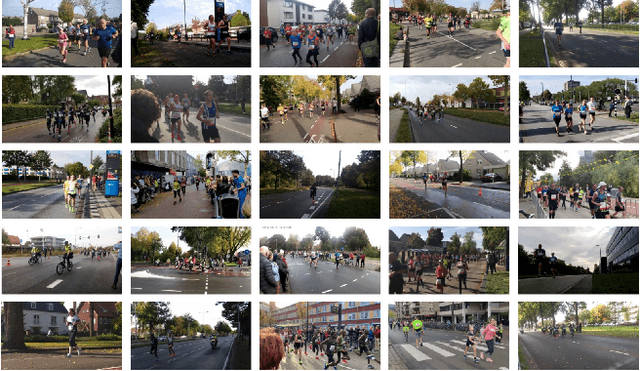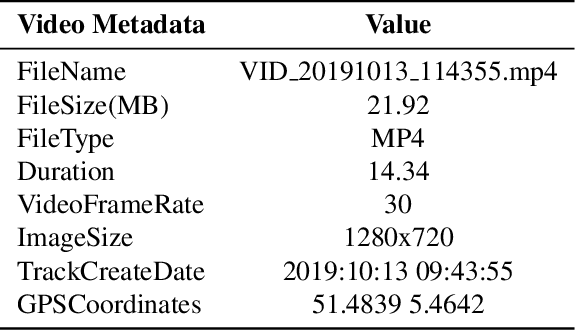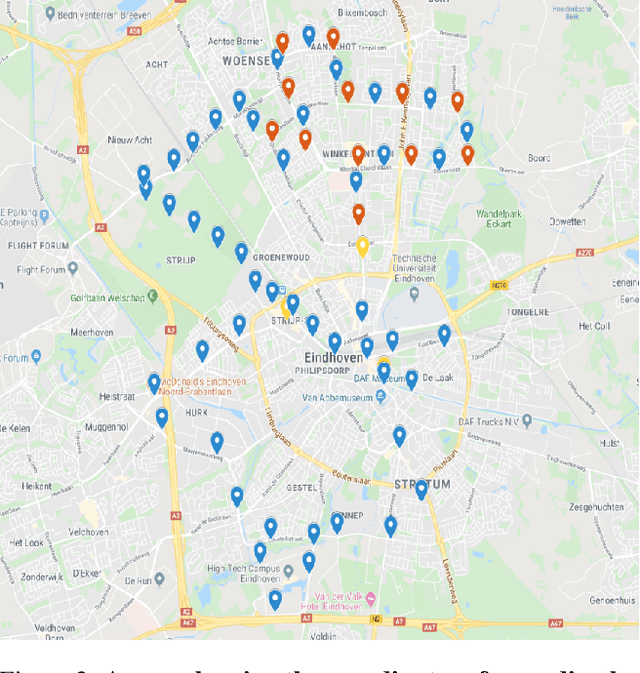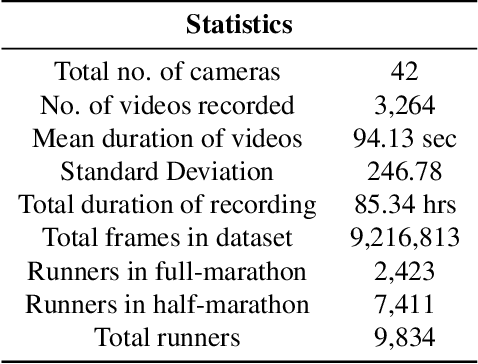Heuristics2Annotate: Efficient Annotation of Large-Scale Marathon Dataset For Bounding Box Regression
Paper and Code
Apr 06, 2021



Annotating a large-scale in-the-wild person re-identification dataset especially of marathon runners is a challenging task. The variations in the scenarios such as camera viewpoints, resolution, occlusion, and illumination make the problem non-trivial. Manually annotating bounding boxes in such large-scale datasets is cost-inefficient. Additionally, due to crowdedness and occlusion in the videos, aligning the identity of runners across multiple disjoint cameras is a challenge. We collected a novel large-scale in-the-wild video dataset of marathon runners. The dataset consists of hours of recording of thousands of runners captured using 42 hand-held smartphone cameras and covering real-world scenarios. Due to the presence of crowdedness and occlusion in the videos, the annotation of runners becomes a challenging task. We propose a new scheme for tackling the challenges in the annotation of such large dataset. Our technique reduces the overall cost of annotation in terms of time as well as budget. We demonstrate performing fps analysis to reduce the effort and time of annotation. We investigate several annotation methods for efficiently generating tight bounding boxes. Our results prove that interpolating bounding boxes between keyframes is the most efficient method of bounding box generation amongst several other methods and is 3x times faster than the naive baseline method. We introduce a novel way of aligning the identity of runners in disjoint cameras. Our inter-camera alignment tool integrated with the state-of-the-art person re-id system proves to be sufficient and effective in the alignment of the runners across multiple cameras with non-overlapping views. Our proposed framework of annotation reduces the annotation cost of the dataset by a factor of 16x, also effectively aligning 93.64% of the runners in the cross-camera setting.
 Add to Chrome
Add to Chrome Add to Firefox
Add to Firefox Add to Edge
Add to Edge